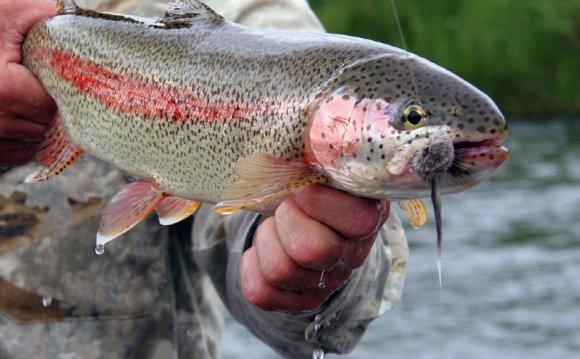
Wish to catch even more Missouri trout? Change your techniques due to the fact seasons and neighborhood conditions modification. These pages informs you how.
Fundamental gear
- A hand net to land a trout (which easily break the range when taken from the liquid)
- A stringer labeled together with your name and target
- Hemostats to remove swallowed hooks
- Waders or waterproof shoes (understand that some areas allow wading while some do not. Make sure you know the legislation for your playground. In addition, believed or permeable soled waders tend to be restricted in Missouri trout streams.)
- A fishing vest to transport the necessities
- Polarized sunglasses to reduce glare and allow you to spot trout underneath the water’s surface
- Rod and reel
A fundamental spin-cast rod and reel will be able to work fine, but various other combinations can be more effective. Ultra-light rods and spinning reels tend to be more flexible and easier to feel a strike. Rods 6 to 6½ legs lengthy show to be better for castability while making it more straightforward to utilize a float. An ultra-light whirling reel is especially designed for light line eg 4 lb test.
Rigging the rod and reel
Make use of a light frontrunner, helping to make the critical end of line less noticeable to fish while allowing you to use more substantial line in the reel. A leader is a 2-foot portion of 2-pound test (or less heavy) range. Attach easy swivel into the initial range on your reel. The best choice will connect towards the breeze swivel.
If using a hook, connect a split-shot in regards to the size of a BB above the snap swivel in the reel’s main range. Various types of hooks can be used with respect to the types of bait plumped for. A treble hook (dimensions 16-18) is effective with many cheese and dough baits. Just one hook sizes- 10-16 may be the choice for salmon eggs. If utilizing a lure or selected artificial, just connect the lure toward leader. Do not use a split chance unless water is large.
Knot Attaching
1. Run the range through eye of the hook, lure or swivel at least six ins and fold to help make two synchronous lines. Bring the end of the line in a circle toward hook or appeal.
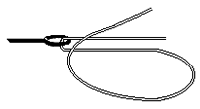
2. Make six turns with label end all over double-line and through circle. Hold double line at point where it passes through eye and pull label end to snug up turns.
3. Now pull standing range to slip knot facing attention.
4. Continue pulling until knot is tight. Trim label end flush with closest coil of knot. This is certainly generally a Uni-knot and will not slip.
Baits, flies, and lures
Trout rely mainly on the feeling of scent plus sight to identify food sources. This is exactly why, discover multiple coloured scented baits available to capture trout. Common commercial brand brands include Berkeley’s energy Bait and Zeke's. They both arrive a variety of colors and make use of aroma attractants. Velveeta mozzarella cheese and loaves of bread will also be excellent choices. Hatchery-raised trout have given on small brown pellets for many of the lives. For this reason, locally made dough-baits can be exemplary for catching trout. This kind of bait is generally based in the park shop.
Granted baits and lures differ by fishing location and season
(A) normal and fragrant baits—A natural fish meals including bait fish, crayfish, frogs allowed as bait, grubs, bugs, larvae, worms, salmon eggs, mozzarella cheese, corn and other meals substances not containing any ingredient to stupefy, injure or destroy fish. Doesn't add flies or synthetic lures. Has bread bait, putty or paste-type bait, any material made to attract seafood by flavor or smell and any fly, entice or bait containing or used in combination with these types of substances.
(B) smooth plastic bait (unscented)—Synthetic eggs, synthetic worms, artificial grubs and soft synthetic lures.
(C) Artificial Lure—A lure made out of any product excluding soft plastic bait and natural and fragrant bait defined in (A) or (B) above.
(D) Fly—An synthetic appeal built on a single-point hook, using any material except smooth plastic bait and normal and fragrant bait as defined in (A) or (B) above, that's tied up, glued or elsewhere permanently attached.
Drift fishing
This technique can be efficient in any problem. You can protect a large area and present your bait to numerous trout. Start with making use of a split chance roughly 12 to 24 inches from your hook. Make use of a leader if fishing is sluggish. Adapt to liquid problems consequently (larger split chance and much longer frontrunner for deeper fast moving liquid). Utilize a small treble or salmon hook. If you are using a treble hook, mold your bait (Berkley’s Power Bait, Velveeta cheese, Zeke’s cheese, bread or in your area made dough bait) on the hook so that it is covered completely. Utilize sufficient bait to conceal hook with no much more. If you use a salmon hook just hook the salmon egg through middle. Cast upstream from fish (if visible) and hold pace along with your bait by gradually reeling into the slack line given that current pushes it downstream. Trout may bite softly therefore be ready. Setting the hook needs a medium pull-back from the rod. A hard hook set on trout will cause one to get less seafood. Trout are choosy that can like one color on certain day yet not another. Decide to try various colors if a person is not working for you. Another helpful hint is to look for completely what other fisherman are employing and also this may help save you a while. Flies and lures could also be used for this strategy.
Float fishing
This technique is similar to drift fishing apart from using a floater (bobber). A small thin floater is preferred. Adjust your floater appropriately utilizing the depth of trout. Set the hook once the floater makes a rapid action.
RELATED VIDEO
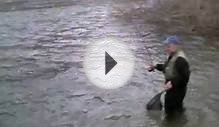



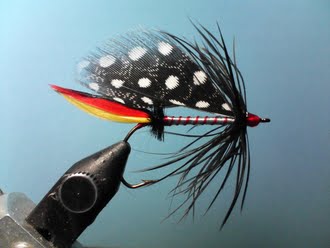 A fly lure, Fly, or "pattern," in the terminology of sport fishing and fly fishing, is an artificial fishing lure tied, most commonly, with thread, feathers, and fur, but may also include lead (for weight), ribbon, tinsel, beads, and other assorted materials. Fly...
A fly lure, Fly, or "pattern," in the terminology of sport fishing and fly fishing, is an artificial fishing lure tied, most commonly, with thread, feathers, and fur, but may also include lead (for weight), ribbon, tinsel, beads, and other assorted materials. Fly...
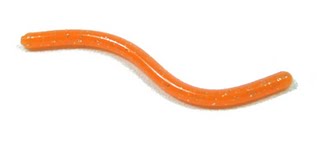 A plastic worm (or trout worm) is a plastic fishing lure, generally made to simulate an earthworm. Plastic worms can carry a variety of shapes, colors and sizes, and are made from a variety of synthetic polymers. Some are even scented to simulate live bait.
A plastic worm (or trout worm) is a plastic fishing lure, generally made to simulate an earthworm. Plastic worms can carry a variety of shapes, colors and sizes, and are made from a variety of synthetic polymers. Some are even scented to simulate live bait.







